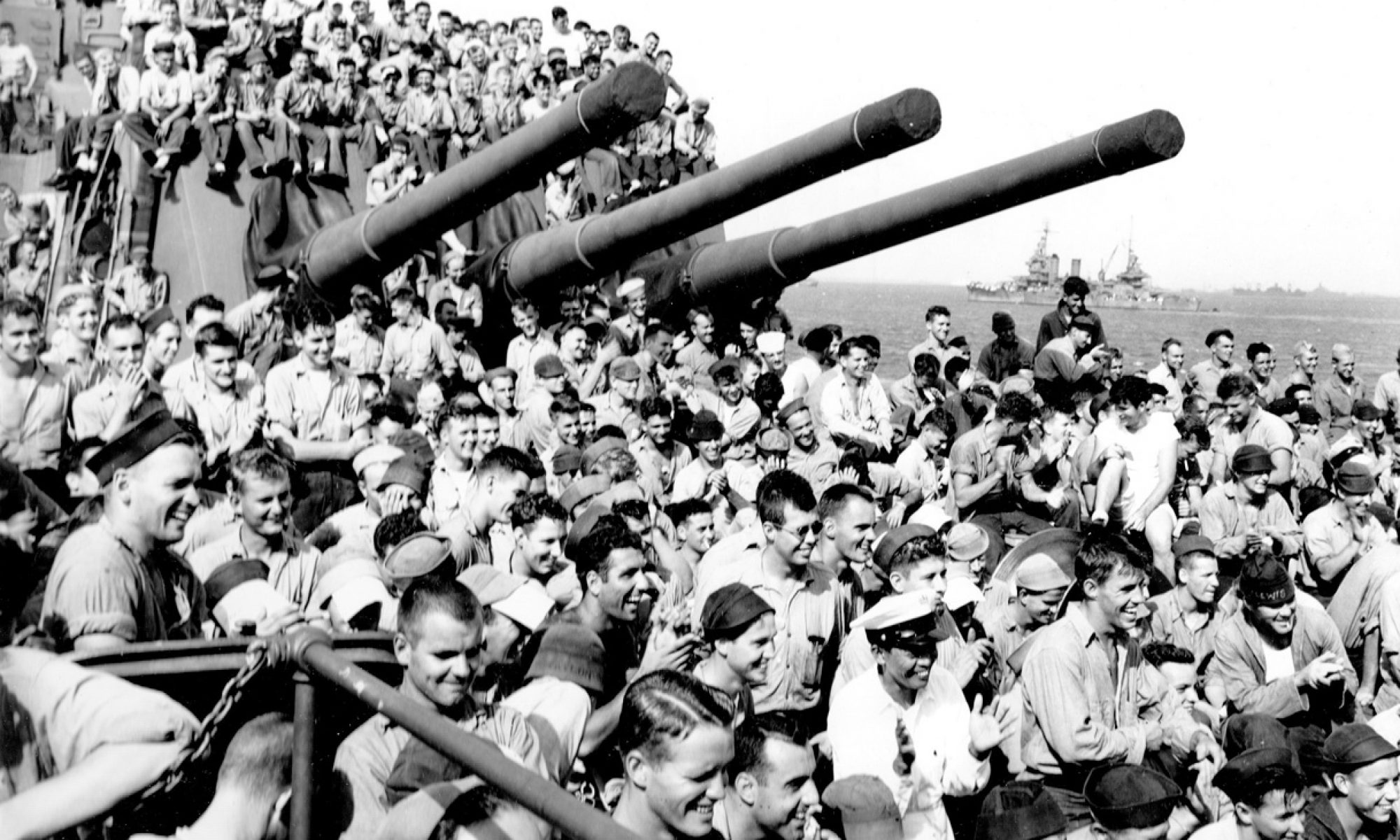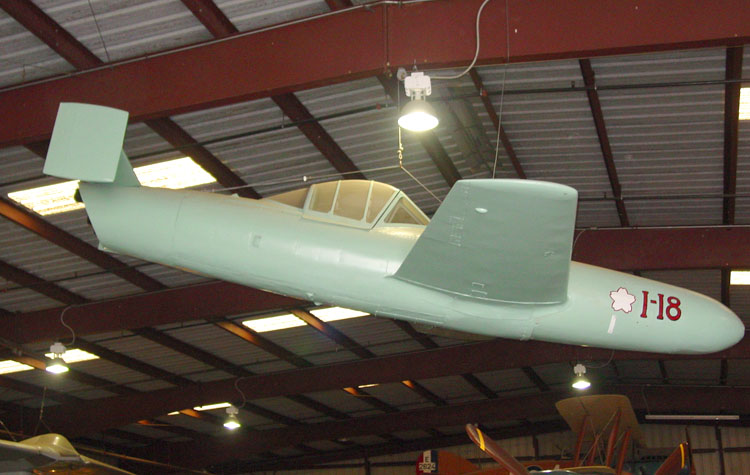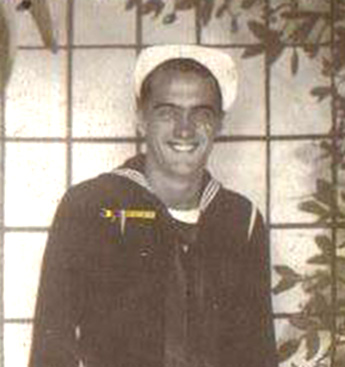7-18-14
The ship left San Pedro on June 1, after months of repair / retrofit construction and headed back to the Pacific via Pearl Harbor. She left Pearl Harbor on July 2nd in a small group of destroyers and the cruiser St. Paul, and headed for Eniwetok (Marshall Islands). On July 12, she left the anchorage and headed north to join up with the Task Force off the shores of Japan.
Frank Studenski’s diary entries:
July 16, 1945: This afternoon we are about 730 miles from Japan. After we join up with the fleet we will probably makes strikes on the mainland.
July 17, 1945: This morning we joined up with a group of tankers and cargo ships. We have never been in a large group of support ships.
July 18, 1945: This morning we joined up with some more tankers, we now have a large group of support ships. It is getting a little colder out today, and it has been raining all day.
July 19, 1945: This morning we are still on a westerly course, the sea is still very rough.
July 20, 1945: This morning we met with the fleet and fueled from the tankers and got our orders to go in Task Force 38.4, Battleships – Iowa, Missouri, and Wisconsin; Carriers – Yorktown, Bon Homme Richard, Shangri-La, and Wasp; Cruisers – Boston, Quincy, Chicago, St. paul and two A-A cruisers. All of the cruisers are sister ships.
steve


